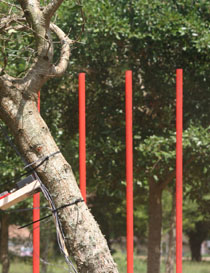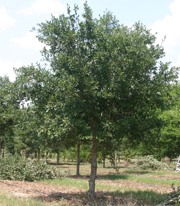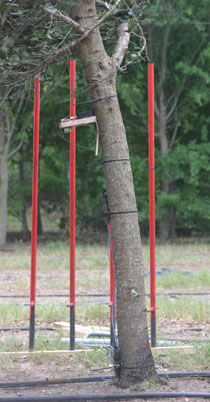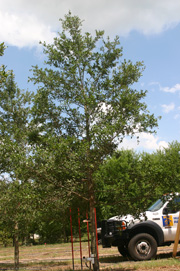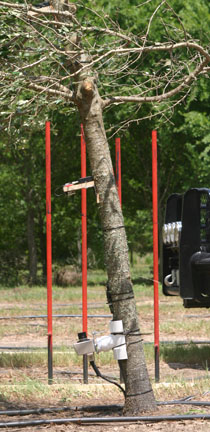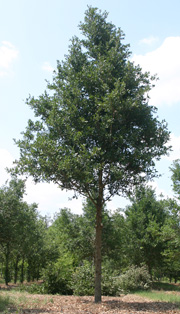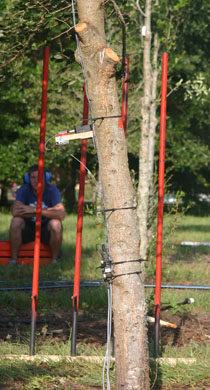Home > Pruning shade trees > Pruning reduces wind damage > Trunk bending at 120 mph
Trunk bending at 120mph
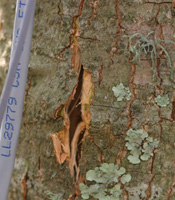 Close-up of the lower portion of trunks bending in 120mph wind showed that the three pruning treatments resulted in the same lower trunk bending, and all three bent less than non-pruned trees. The inclinometer that measured lower trunk angle is visible in each close-up photograph. However bending on the upper portion of the tree was least for thinned and reduced trees; raised trees faired no better than trees that were not pruned. Raised trees in this study could be expected to act like lions-tailed trees in the landscape. Reduced trees might act like trees that received structural pruning.
Close-up of the lower portion of trunks bending in 120mph wind showed that the three pruning treatments resulted in the same lower trunk bending, and all three bent less than non-pruned trees. The inclinometer that measured lower trunk angle is visible in each close-up photograph. However bending on the upper portion of the tree was least for thinned and reduced trees; raised trees faired no better than trees that were not pruned. Raised trees in this study could be expected to act like lions-tailed trees in the landscape. Reduced trees might act like trees that received structural pruning.
| Average angle of trunk from the vertical on 5 trees in 120mph wind is listed under each photograph. | ||
| Pruning treatment | Before testing | During testing |
| No pruning | 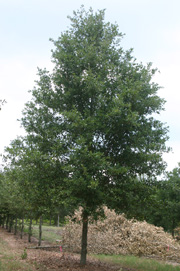 |
Lower trunk angle = 27 |
| Reducing |
Crown was reduced in height using a reduction cut. |
Lower trunk angle = 10 |
| Thinning |
Crown was thinned by removing primary branches back to trunk. |
Lower trunk angle = 12 |
| Raising |
Crown was raised be removing lowest branches. |
Lower trunk angle = 10 |

